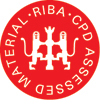Energy efficiency is a key requirement of sustainable lighting design. It is estimated that lighting is responsible for around 19% of electricity consumed in the UK, about 64 TWh/year, which equates to 32 million tonnes of carbon dioxide. Two factors affect energy consumed by a lighting installation – its power consumption in use, and the length of time it is used for, with the latter being dictated by occupancy, daylight integration, and controls.
We will visit Hoare Lea’s new offices, where they have invested heavily in new designed lighting systems and techniques that enhance energy use and lower costs, while providing a better psychological environment for staff.
Key learning points:
- Energy consumption values in lighting design
- Intelligent controls, monitoring and power saving modes
- Use of daylighting as an efficiency gain
- Energy usage and saving potentials within lighting design
- General data on new energy (lighting) efficiency regulations and Building Regulation’s targets
- Regeneration overview of Kings Cross
About the contributor
Dominic Meyrick, Lighting Principal at Hoare Lea Lighting, has been responsible for many high-profile projects, from 8 Fenchurch Street to Terminal 3; from Centrepoint to the Sheldonian Theatre in Oxford
 Disclaimer: NBS TV programmes are the intellectual property of RIBA Enterprises and it shall be a breach of this right to copy, or in any way exploit commercially or show in public any of the programmes without the express permission of RIBA Enterprises.
Disclaimer: NBS TV programmes are the intellectual property of RIBA Enterprises and it shall be a breach of this right to copy, or in any way exploit commercially or show in public any of the programmes without the express permission of RIBA Enterprises.
